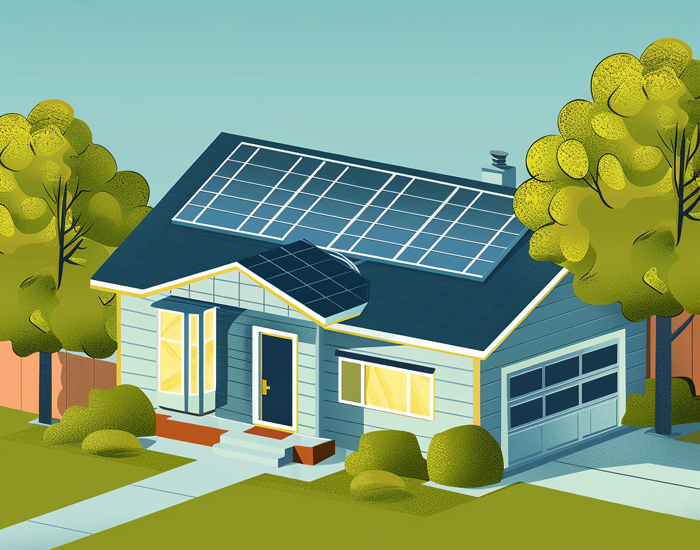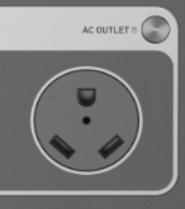Whole House Solar Generators: Let The Sun Pay Your Power Bill
Harnessing the sun’s power to run your entire home might sound like a futuristic idea, but it’s a practical reality today. Whole house solar generators are becoming a popular choice for homeowners looking to reduce their carbon footprint and electricity bills. In this article, we’ll guide you through what you need to know about installing a solar power system for your entire house.
Understanding Local Regulations on Whole House Solar Generators
Before you can begin reaping the benefits of solar energy, it’s essential to get acquainted with the local regulations that govern its use. Navigating these regulations is the first step in your solar installation journey. Local laws can vary significantly depending on where you live, and they can affect everything from the placement and size of solar panels to the potential for selling excess power back to the grid.
Local Codes
Start by checking out your city or county’s building and zoning codes. Many areas require homeowners to obtain permits before installing solar panels. These permits ensure that the installation meets local safety standards and building codes. In some cases, you may also need to get approval from your local homeowner’s association (HOA), which could have its own set of aesthetic guidelines for solar installations. There are substantial differences in codes and regulations, depending on where in the country you live.
Financial Incentives
Moreover, it’s important to investigate whether there are any incentives for solar energy installations in your area. Many governments offer tax breaks, rebates, or other incentives to encourage homeowners to switch to renewable energy. These can significantly reduce the upfront cost of solar panels and systems.
Local Installers Are Knowledgeable
Engaging with local solar installers can also provide valuable insights. These professionals are usually well-versed in the local laws and can navigate the permitting process efficiently. They can help you understand the specific requirements and timelines, ensuring that your project adheres to all legal stipulations. They are experts in whole house solar generators.
Understanding and complying with these regulations not only ensures that your solar installation proceeds without legal impediments but also maximizes the efficiency and efficacy of your solar system. Have you checked what local solar incentives might be available to you?
Estimating the Cost of a Whole House Solar System
When considering a whole house solar system, the first question many homeowners ask is, “How much will it cost?” The answer isn’t straightforward as it depends on numerous factors including your energy needs, the type of solar technology you choose, and the scale of the installation.
Assess Your Current Energy Usage
To begin estimating costs, start by assessing your current energy usage. Look at your electricity bills from the past year to get an idea of your monthly and annual consumption. This information helps determine the size of the solar system needed to meet your energy demands.
Types of Solar Panels
Next, consider the type of solar panels and the system configuration. There are several types of solar panels on the market, each with different efficiency rates and prices. Monocrystalline panels, for example, are highly efficient but also more expensive than polycrystalline panels. The choice depends on your budget and the space available for installation. The panels must be compatible with whole house solar generators.
In addition to the panels, the overall cost includes inverters, batteries (if opting for a storage system), mounting hardware, and potentially a power management system. These components are crucial for converting, storing, and managing the solar energy produced by your panels.
Labor Costs
Labor costs also play a significant role in the overall expense. Installation labor costs can vary based on the complexity of your home’s roof layout and the experience of the installer. It’s wise to get multiple quotes from different contractors to compare prices and services offered.
Don’t forget to factor in potential savings from government incentives. Many countries offer tax credits, rebates, or other financial incentives to reduce the initial cost of solar installations. These incentives can make a significant difference in the overall financial calculation.
Considering these factors will provide a clearer picture of the initial investment needed for a whole house solar system. By doing your homework and consulting with professionals, you can tailor a solar power solution that meets your energy needs and fits your budget.
Manufacturers of Whole House Solar Generators
Selecting the right manufacturer for your whole house solar generator is critical to ensuring reliability and efficiency. There are numerous manufacturers on the market, each offering a range of products with different features and benefits.
When choosing a manufacturer, consider the technology behind their products. Some manufacturers specialize in photovoltaic (PV) technology, which is commonly used in residential solar systems. Others might offer thin-film solar panels, which are less common for residential use but offer advantages in certain climates and settings.
Warranties
Another important factor is the warranty offered by the manufacturer. This can serve as a proxy for the quality and reliability of their products. Most top-tier solar panel manufacturers offer warranties that last for 25 years or more, covering potential defects and ensuring a certain level of performance over the lifespan of the panels.
Customer Service
Customer service is also crucial. A company’s reputation for responsive customer support can be invaluable, especially if issues arise with your system. Research online reviews and testimonials to gauge other customers’ experiences.
Finally, compare the cost-effectiveness of different manufacturers. Some might offer more competitive pricing without compromising on quality. Be sure to balance cost with the factors mentioned above to ensure that you are getting the best value for your investment.
Understanding these aspects will help you choose a manufacturer or whole house solar generators that not only fits your budget but also provides reliable and efficient solar solutions for your home.
Finding a Local Contractor for Solar Installation
The installation of a whole house solar system is not a simple DIY project. It requires professional expertise to ensure that the system is safely and efficiently installed. Finding the right contractor is therefore essential to the success of your solar energy project.
Are They Certified?
Start by searching for local contractors with certifications from recognized industry organizations. These certifications indicate that the contractor has undergone training and adheres to industry standards in solar installation. Additionally, ensure that the contractor is licensed and insured, which protects you against liability during the installation process.
References
Ask potential contractors for references and case studies of past installations. This will give you insight into their experience and the quality of their work. It’s also a good idea to visit some of their completed projects if possible, to see firsthand the quality of the installations.
Communication is another key factor. During your initial consultations, note how well the contractor explains the installation process and how they plan to tailor the system to meet your specific energy needs. A good contractor will make an effort to understand your objectives and provide a clear, detailed proposal.
Price
Price is, of course, a consideration, but it shouldn’t be the sole deciding factor. A lower bid might mean lower quality materials or cutting corners in installation. It’s important to get detailed bids from several contractors to compare what is included in the price.
Choosing the right contractor ensures that your solar system is installed efficiently and operates at optimal performance. It also provides peace of mind that any future issues will be handled professionally.
Prices of whole house solar generators are easily compared on the internet.
Understanding Grid-Tie Systems
A grid-tie solar system is one of the most popular configurations for residential solar power. This system connects your solar array to the local utility grid, providing several benefits that increase the system’s efficiency and economic viability.
The Grid is a Battery
One of the primary advantages of a grid-tie system is the ability to use the grid as a virtual battery. During the day, if your solar panels produce more electricity than your house needs, the excess power can be sent back to the grid. In many areas, utilities offer net metering, where you receive credits for this excess energy, effectively reducing your electricity bills even further.
Conversely, during the night or on cloudy days when your panels aren’t producing enough electricity, you can draw power from the grid. This seamless switch ensures that your home has a constant energy supply without the need to install costly battery storage systems.
Cost Effectiveness
Another benefit of a grid-tie system is its simplicity and cost-effectiveness. Compared to off-grid systems, grid-tie systems do not require expensive battery storage to function. This not only lowers initial installation costs but also reduces maintenance requirements, as batteries need to be replaced every few years.
Reliability
Furthermore, being connected to the grid provides security and reliability. In the event of any performance issues with your solar panels, the grid acts as a backup to ensure that your home’s power needs are always met. This dual-source approach can be especially important in areas with inconsistent sunlight.
However, grid-tie systems do have a few considerations. For instance, if the utility grid goes down, most grid-tie systems will automatically shut off. This safety requirement, known as anti-islanding, is designed to protect utility workers from electric shocks from lines they expect to be power-free. To overcome this, you can opt for a grid-tie system with battery backup or a hybrid system that remains operational during outages.
Understanding how a grid-tie system works and its benefits can help you decide if it’s the right setup for your home solar power needs. It combines the practicality of solar energy with the reliability of the utility grid, offering a balanced solution for sustainable home energy.
The Downside of Grid-Tie Systems
It is an unfortunate fact that many large power companies make it difficult to tie into their grids. They have enjoyed an electricity monopoly in towns and cities for a century, and sometimes they view residents who make their own electricity as a long-term threat. One of the first steps in planning your home solar power system should be to investigate your local grid-tie situation.
Solar Power During Local Power Outages
One of the significant advantages of having a whole house solar generator, especially with a battery backup system, is its ability to provide power during local outages. This feature can be a real game-changer in regions where power outages are frequent or can last for extended periods.
Solar panels alone, as part of a grid-tie system without batteries, typically will not provide power during an outage due to anti-islanding regulations designed to protect utility workers. However, by integrating battery storage, your home can become a self-sufficient energy unit, capable of operating independently from the grid when necessary.
Automatic Disconnect
During an outage, a solar system with battery backup automatically disconnects from the grid and continues to power your home using the stored energy. This switch happens seamlessly and can provide uninterrupted power for critical loads such as lighting, refrigeration, and heating systems depending on the size of the battery and your energy usage.
To optimize your system for outages, consider which circuits are essential and ensure they are connected to the solar system. This might include the kitchen appliances, a few lights, and perhaps medical equipment if necessary. Non-essential loads can be excluded to prolong the battery’s supply during an outage.
Maximizing the Benefits of Your Solar Power System
To truly maximize the benefits of your solar power system, consider pairing it with energy-efficient technologies and smart home devices. These enhancements can significantly reduce your overall energy consumption and increase the cost-effectiveness of your solar investment.
“Smart Home” Technology
For instance, smart thermostats can learn your heating and cooling preferences and adjust automatically to optimize energy use. LED lighting uses much less electricity than traditional incandescent bulbs and lasts longer, reducing both your energy and maintenance costs.
Energy Star Ratings
Additionally, consider installing energy-efficient appliances that have a high Energy Star rating. These appliances use advanced technology to minimize electricity usage without sacrificing performance. This is particularly beneficial in homes with solar power, as it reduces the load on your system and extends the life of your batteries.
Regular maintenance is also key to sustaining the performance of your solar system. This includes cleaning the solar panels regularly to remove dust, leaves, and other debris that could block sunlight and reduce efficiency. You should also check the system’s components, such as inverters and connectors, to ensure they are functioning correctly.
By adopting these practices, you can enhance your solar system’s efficiency, reduce your environmental impact, and save money on energy costs in the long run. Isn’t it worth investing a little to save a lot in the future?
Future of Home Energy: Solar Power and Beyond
Looking ahead, the potential for residential solar power is immense. Innovations in solar technology and battery storage are making these systems more efficient and affordable for homeowners around the world. As these technologies continue to evolve, we can expect solar power to play an increasingly central role in global energy solutions.
Smart Grids
One exciting development is the integration of solar power with smart grid technology. Smart grids enable more efficient energy distribution and can dynamically adjust to changes in energy supply and demand. For homeowners, this means even greater control over their energy usage and the ability to respond in real-time to changes in grid conditions.
More Efficient Solar Panels
Another area of advancement is in the efficiency of solar panels themselves. Researchers are continually finding ways to increase the conversion efficiency of solar cells, allowing more power to be generated from the same amount of sunlight. This could reduce the number of panels you need and decrease the overall footprint of solar installations, making it more feasible for urban and densely populated areas.
Community Solar Gardens
Additionally, the rise of community solar gardens is a promising development for those who cannot install solar panels directly on their property. These programs allow multiple individuals to benefit from a single, large-scale solar array located off-site. Participants can buy or lease a portion of the solar garden and receive credit on their electricity bills for their share of the power produced.
The future also holds potential for integrating solar energy with other renewable sources, such as wind and hydroelectric power, to create a more robust and reliable energy system. This hybrid approach can help balance the variability of solar production and ensure a steady energy supply.
Regulations
Moreover, legislative and regulatory frameworks are beginning to catch up with technological advancements, providing clearer pathways for solar adoption and integration into the national grid. These policies not only support the growth of solar energy but also encourage the development of related technologies such as electric vehicles and energy-efficient buildings.
Embracing these innovations can dramatically transform how we think about and use home energy. It positions solar power not just as an alternative, but as a mainstream energy solution. The potential for a sustainable, energy-independent future is on the horizon, and solar power is a key player in this transition.
Final Thoughts
Adopting a whole house solar generator is a powerful step towards energy independence and sustainability. By understanding local regulations, estimating costs accurately, selecting the right components, and working with qualified professionals, you can ensure a successful installation. Additionally, integrating your system with current technologies and maintaining it properly will maximize its efficiency and lifespan.
By navigating these key aspects of installing and maintaining a whole house solar generator, you’re not just preparing for a sustainable future—you’re actively creating it. Have you thought about how your decision to go solar could inspire others in your community? Imagine the impact if everyone took a step towards renewable energy. Isn’t it exciting to be part of this positive change? Remember, every solar panel installed is a step closer to a cleaner, more sustainable world. Ready to take that step?
FAQs About Whole House Solar Generators
- How long does it take to install a whole house solar system?
Installation can vary from a few days to several weeks, depending on the complexity of the system and site-specific challenges. It’s important to discuss timelines with your contractor to have a clear understanding of the project duration. - Can I install a whole house solar system myself?
While it’s possible for individuals with a strong DIY background to install smaller solar systems, a whole house system typically requires professional installation due to its complexity and the safety issues involved with electrical systems. - What maintenance does a solar power system require?
Basic maintenance includes cleaning the solar panels a few times a year and ensuring that trees or other obstacles do not shade them. It’s also wise to have a professional check the system’s electrical and mechanical components periodically to ensure everything is operating efficiently. - How long will my solar power system last?
Solar power systems are designed to be durable and long-lasting. Most systems come with a 25 to 30-year warranty on the panels, and the inverters may need to be replaced every 10 to 15 years. With proper maintenance, your system can continue to provide value for many years. - Are there any financial assistance programs available for installing solar panels?
Yes, many governments offer tax credits, rebates, and grants to help offset the installation costs of solar systems. Additionally, some local utilities and private financial institutions also offer financing options aimed at making solar energy more accessible.



